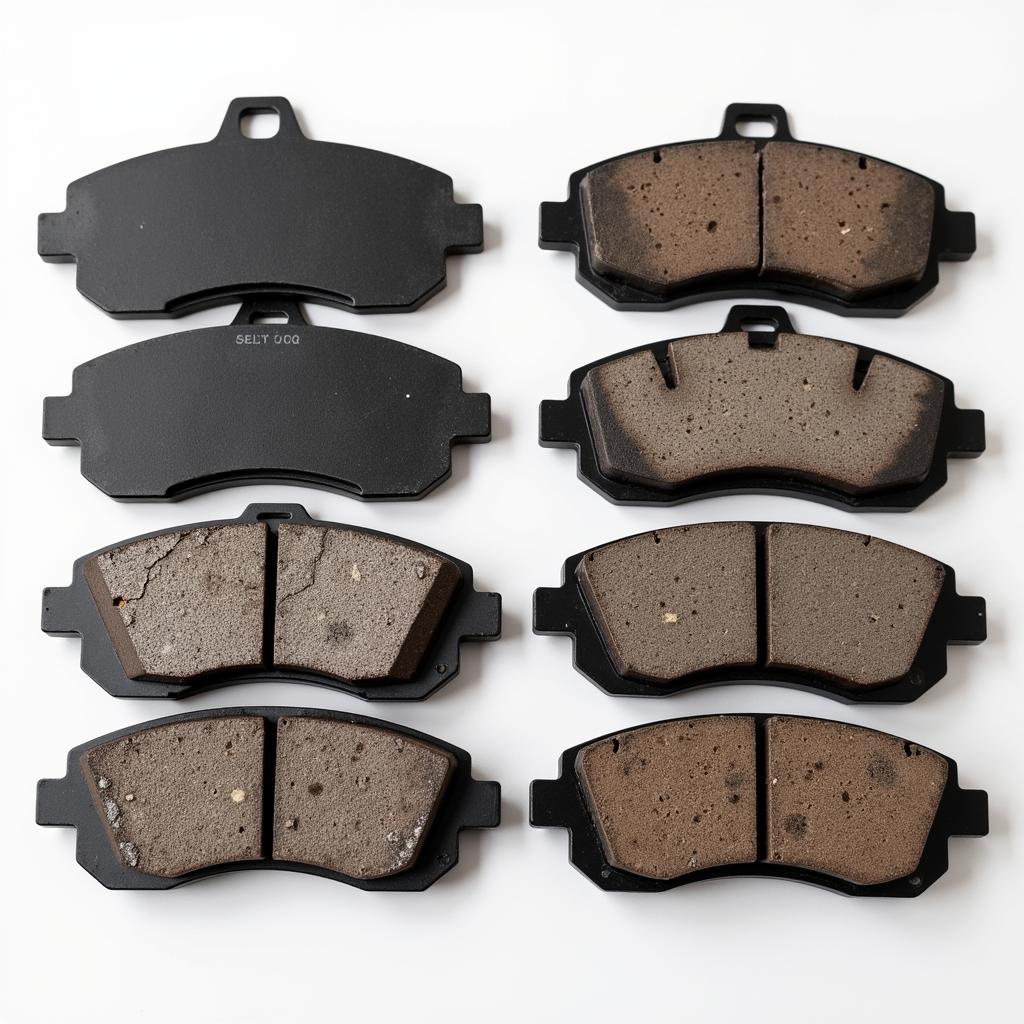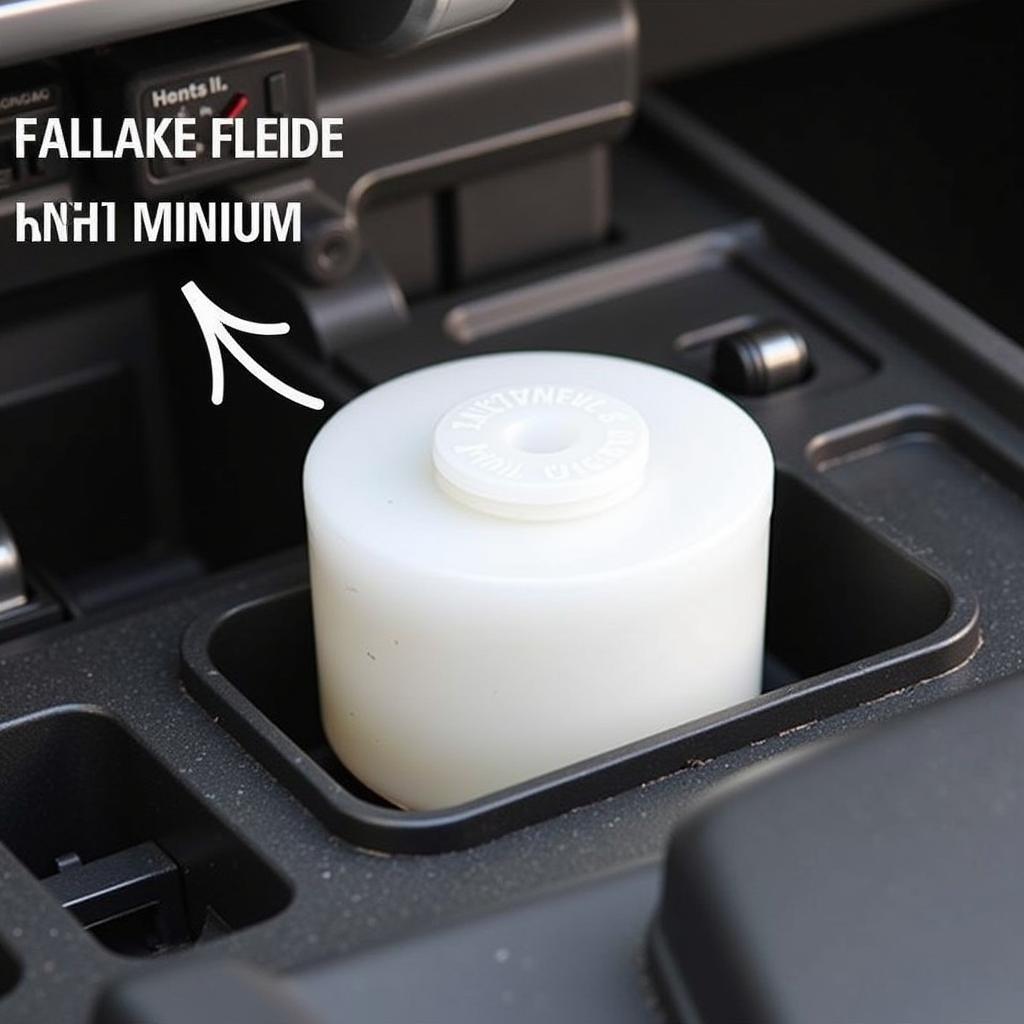That yellow light that just popped up on your dashboard – the one that looks suspiciously like a parenthesis encasing an exclamation point – could be trying to tell you something important: your brake pads might be wearing thin. This little symbol is known as the brake pad wear warning light, and ignoring it could lead to costly repairs and, more importantly, compromise your safety on the road.
Understanding Your Car’s Braking System
Before we delve into the specifics of the brake pad wear warning light, let’s quickly review how your car’s braking system works. Modern vehicles typically use a disc brake system for all four wheels. Here’s a simplified breakdown:
- Brake Pads: These are flat pieces of metal with a friction material attached to them. They are housed in the brake caliper.
- Brake Rotors: Large metal discs connected to your wheels.
- Brake Caliper: This hydraulic component clamps the brake pads against the rotors when you press the brake pedal.
When you hit the brakes, hydraulic pressure forces the caliper to squeeze the pads against the rotors, generating friction that slows down the rotation of the wheels, ultimately bringing your vehicle to a stop.
What Triggers the Brake Pad Wear Warning Light?
The brake pad wear warning light is part of a simple yet ingenious system. Most cars today have electronic sensors embedded within the brake pads themselves. These sensors are designed to complete a circuit and trigger the warning light on your dashboard when the brake pad material wears down to a predetermined level.
Other Possible Causes for the Warning Light
While worn brake pads are the most common reason for the brake pad wear warning light to illuminate, there are other potential culprits:
- Faulty Sensor: Like any electrical component, brake pad wear sensors can malfunction. A short circuit or a broken wire could cause the light to come on prematurely.
- Low Brake Fluid: Your car’s braking system relies on hydraulic pressure, which is generated by brake fluid. If the fluid level is too low, it could trigger the warning light.
- Brake System Issues: In some cases, the warning light could indicate a more serious problem with your braking system, such as a leak in the hydraulic lines or a malfunctioning caliper.
What to Do When the Warning Light Comes On
If the brake pad wear warning light illuminates on your dashboard, don’t panic. However, don’t ignore it either. Here’s what you should do:
- Assess Your Braking Performance: Do you notice any unusual noises, vibrations, or a spongy feeling when you apply the brakes? These could be signs of worn brake pads.
- Check Your Brake Fluid Level: This is a simple check you can usually do yourself. Refer to your owner’s manual for the location of the brake fluid reservoir and the recommended fluid level.
- Schedule an Inspection: The safest course of action is to have a qualified mechanic inspect your braking system as soon as possible. They can determine the root cause of the warning light and recommend the appropriate repairs.
The Importance of Timely Brake Pad Replacement
 Worn Brake Pads Compared to New Brake Pads
Worn Brake Pads Compared to New Brake Pads
Driving with worn brake pads is not only unsafe but can also lead to more expensive repairs down the line. Here’s why:
- Reduced Braking Efficiency: Worn brake pads offer a smaller surface area for friction, which can significantly reduce your car’s ability to stop effectively.
- Damage to Rotors: If you continue to drive with worn pads, they can eventually damage the brake rotors, leading to costly replacements.
- Increased Risk of Accidents: Perhaps the most critical reason to address worn brake pads promptly is to avoid compromising your safety and the safety of others on the road.
Can I Replace My Brake Pads Myself?
While replacing brake pads is considered a relatively straightforward automotive repair, it’s not a task for the inexperienced DIYer. Brakes are a critical safety system, and improper installation can have serious consequences. If you’re comfortable working on your car and have the necessary tools and knowledge, you can certainly attempt the repair yourself. However, if you’re unsure, it’s always best to leave it to the professionals.
Brake Pad Wear Warning Light: Your Safety Net
The brake pad wear warning light is a crucial safety feature in your car. It’s designed to give you ample notice before your brake pads reach a critically worn state. Don’t ignore it. Timely inspection and brake pad replacement can save you money on repairs and, most importantly, keep you safe on the road.
Frequently Asked Questions
How long can I drive with the brake pad wear light on?
It’s strongly advised not to drive with the brake pad warning light on. While you might be able to drive a short distance, the exact duration is impossible to determine. It’s crucial to have your brakes inspected immediately to assess the severity of the wear and ensure your safety.
How much does it cost to replace brake pads?
The cost of brake pad replacement varies depending on your car’s make and model and the type of brake pads you choose. However, you can typically expect to pay between $150 and $300 per axle.
How often should I replace my brake pads?
There’s no one-size-fits-all answer to this question, as brake pad lifespan depends on your driving habits and conditions. However, a general guideline is to have your brake pads checked every 12,000 miles or annually.
Can I just top off my brake fluid if the light is on?
While low brake fluid can trigger the warning light, it’s crucial to determine the underlying cause before simply adding more fluid. If you have a leak, topping off the fluid is only a temporary solution.
Is it normal for my brakes to make noise after a pad replacement?
Some noise, such as a slight squeak, is normal after a brake pad replacement and usually goes away after the pads break in. However, if you hear grinding or scraping sounds, it’s essential to have your brakes inspected immediately.

